This L.A. group is helping people with disabilities scale mountains and win championships

- Share via
Kendall Obra, 31, a climber living in Pasadena, has been coping with multiple disabilities for almost two decades. She was diagnosed with Type 1 diabetes in 1998, and in 2004, she developed Hashimoto’s disease, an endocrine autoimmune condition, as well as hypothyroidism.
“I used to often say, ‘Most of the time, I can do all the things I want, except when I can’t do anything I want,’” she says.
In 2022, she shattered her right femur and fractured her right humerus, resulting in the placement of a titanium rod inside her femur, two screws at her knee and two at her hip. Now Obra lives with both dynamic and stable disabilities at the same time.
In September 2022, Obra met another climber who told her that ParaCliffHangers (PCH), a national nonprofit organization for adaptive climbers who have disabilities, was sponsoring its inaugural West Coast trip to Yosemite in a week and a half.
Get The Wild newsletter.
The essential weekly guide to enjoying the outdoors in Southern California. Insider tips on the best of our beaches, trails, parks, deserts, forests and mountains.
You may occasionally receive promotional content from the Los Angeles Times.
Despite the fact that she knew none of the 40 people attending, Obra immediately wanted to go. On the trip, she knew she had found her people: “These were people I felt really seen by, and people I was able to advocate for as a disabled person.”
The trip Obra went on was donation-based, thanks to the 501(c)(3) nonprofit status of ParaCliffHangers, which was co-founded in New York City in 2019 by Emily Seelenfreund, 32, and Denise Stypulkowski (a.k.a. Denny Kowska), 32, the current executive director of the organization. Seelenfreund has since moved to the Bay Area, while Kowska lives in New York. ParaCliffHangers provides community and fosters equity through adaptive rock climbing, which seeks to make climbing accessible to people of all abilities, including those with disabilities. The group sponsors not only indoor meetups and outdoor climbing but also a competitive team that travels to paraclimbing nationals and world cups. The hope, according to Seelenfreund, is to make adaptive climbing as accessible as nonadaptive climbing.
“One unique and important thing is that we’re disability-founded and -led,” says Seelenfreund. “A lot of organizations assisting with disabilities are not necessarily using that model, and for us, it sets a really encouraging tone right off the bat. We often try to pair new climbers with more experienced PCHers with a similar disability. It’s powerful for new members to see that they can recreate with people like them, whereas in the rest of the world, oftentimes you’re the only one going about it.”

This year, the organization has reached Los Angeles, opening a chapter at Touchstone Climbing’s Pasadena outpost, The Post, under Obra’s leadership. The organization has 11 chapters: The others are in San Diego; Berkeley; Oakland; Concord, Calif.; San Francisco; Long Island City, Queens; Gowanus, Brooklyn; the Upper West Side, Manhattan; Flemington, N.J.; and Durham, N.C.
“The groups in various cities also offer a lot of fun,” says Seelenfreund, mentioning social events like Friday night drinks and birthday celebrations. “The birthday rule is that you belay them, and while the climber is up in the air, the whole gym sings to them.”
Seelenfreund, who has a form of brittle bones disease, uses a wheelchair and crutches. Nonadaptive climbers often have questions, she says, because they’re not used to seeing climbers like her. After all, she reflects, adaptive climbing is only about a decade old. According to both Seelenfreund and Obra, nonadaptive climbers are welcome at ParaCliffHangers meetups for climbing or to set up mechanical systems, belay new climbers or provide disability-related assistance as callers for blind or low-vision climbers.
Seelenfreund has competed in sports since she was young, starting with wheelchair basketball. She is a three-time national champion at the Paraclimbing National Championship and has won two silver medals and one bronze at Paraclimbing World Cups. Together with seven other ParaCliffHangers climbers, Seelenfreund will attend the IFSC Climbing World Championships in August in Bern, Switzerland. She recently began working as the executive director of the Bay Area Outreach and Recreation Program, which provides sports, recreation and fitness programming for kids and adults with physical disabilities and visual impairments.

Her route to a smashing championship climbing career, however, was paved with hesitation.
“I was new to New York and practicing law, and looking for a community and something new to do,” Seelenfreund says. “I heard people with disabilities were climbing, but I wasn’t sure it was safe because my bones break easily. Once I tried it, I was blown away at how accessible it was.”
Seelenfreund was so enamored that she began hosting an adaptive climbing night at her local Long Island City gym, the Cliffs. “Particularly once COVID forced us to move our sessions outside, we realized how much interest there was from our community to not only climb occasionally indoors but to learn outdoor skills and to compete,” she says.
ParaCliffHangers primarily focuses on climbers with physical and vision disabilities, some of whom have limited or no use of their legs. Through a mechanical system using pulleys, adaptive climbers are able to take some of the weight off their legs. “Instead of adaptive climbers feeling like they’re doing a whole bunch of pull-ups, the mechanical system helps it feel like an assisted pull-up,” Seelenfreund says. “There are some members of PCH who climb without their legs or any mechanical advantage: a particularly demanding style of climbing.” For climbers who have balance, stability concerns or more limited range of motion, people acting as side-climbers can ascend alongside them and help balance them on the wall or position limbs during difficult sequences.
ParaCliffHangers pairs vision-impaired climbers with “callers” based on the ground who describe the route to the climber through a Bluetooth headset. “They might say, ‘There’s a crimp at 10 o’clock, and it’s a medium distance away,’” explains Seelenfreund.
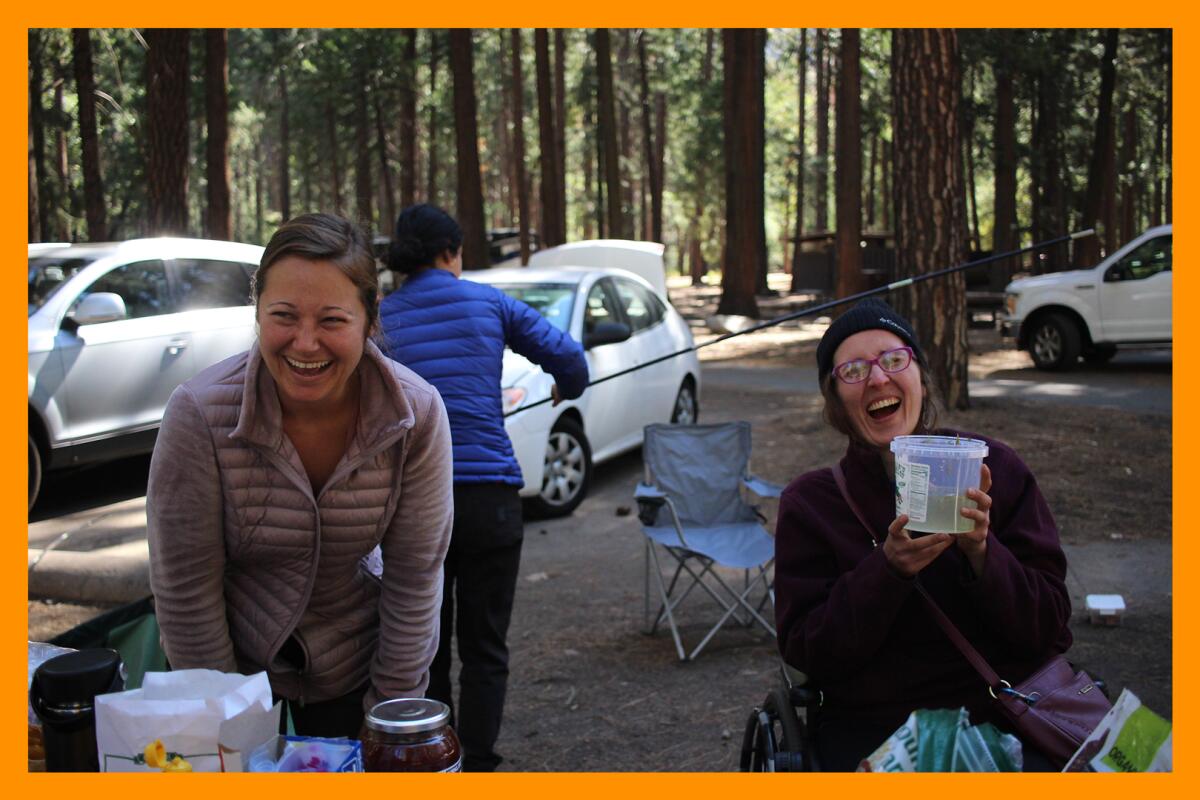
The major obstacle for most disabled people, Seelenfreund says, is that they don’t even know climbing is within the realm of possibility. “This is actually one of the most accessible sports out there,” Seelenfreund says. “If you race, there’s one way to run, but if you climb, there are a whole bunch of ways to get to the top.”
Another major barrier: Climbing outdoors is all about know-how, and there’s a lack of information for adaptive climbers on popular climbing sites like Mountain Project. ParaCliffHangers has worked to crowd-source areas and routes that would potentially work for the adaptive climbing community, but Seelenfreund says they would like to see more work from the larger climbing community. “We need to know the gradient and how long each climb will take — the more info, the better.
“We also need to figure out how to bring some of our mechanical systems outside, including the pulley system and the chair harness, which we only use if there’s really reduced mobility,” Seelenfreund says. “There are a few climbers who have no use of their legs because they’re paralyzed, so they can campus climb [using only their hands and arms], but it’s hard to find a route outdoors that’s campusable.”
Obra will work with the greater organization to plan trips for the Los Angeles chapter to New Jack City (a.k.a. Sawtooth Canyon), Yosemite and Joshua Tree in the next year.
Seelenfreund and Obra both said the gym they belong to, Touchstone Climbing, has been very helpful in their pursuit. “Other organizations, when they think about disability, they want to do the bare minimum, but Touchstone is all about doing more,” says Seelenfreund. The gym has sponsored her and fellow adaptive climber Eliott Nguyen, as well as setting adaptive competition routes to practice for big championships. Touchstone also sent a camera crew to nationals in 2023 to record a 15-minute documentary about ParaCliffHangers’ experience.

And, when building its newest Los Angeles location, The Post, Touchstone took into consideration adaptive climbers, including elevators to get upstairs to the weight area and yoga room as well as an elevator to reach the basement roped climbing. “It builds a whole new level of access,” says Obra.
Patagonia provides the group with financial grants and clothing, Sterling Rope provides climbing ropes and Petzl, a manufacturer of climbing gear, provides belaying devices and a double pulley called the Gemini, which is used for technical hauling systems like the one PCH uses to assist adaptive climbers. To raise funds for its programming, ParaCliffHangers has hosted fundraisers across the country, including an all-night, 12-hour climb-athon competition on both coasts.
“We brought 27 athletes to nationals last year, and we could double that if we had the resources,” says Seelenfreund. “People with disabilities are everywhere, live everywhere and work everywhere and are one of the largest minority groups out there. We want to empower other people to create these opportunities anywhere there is interest and need.”
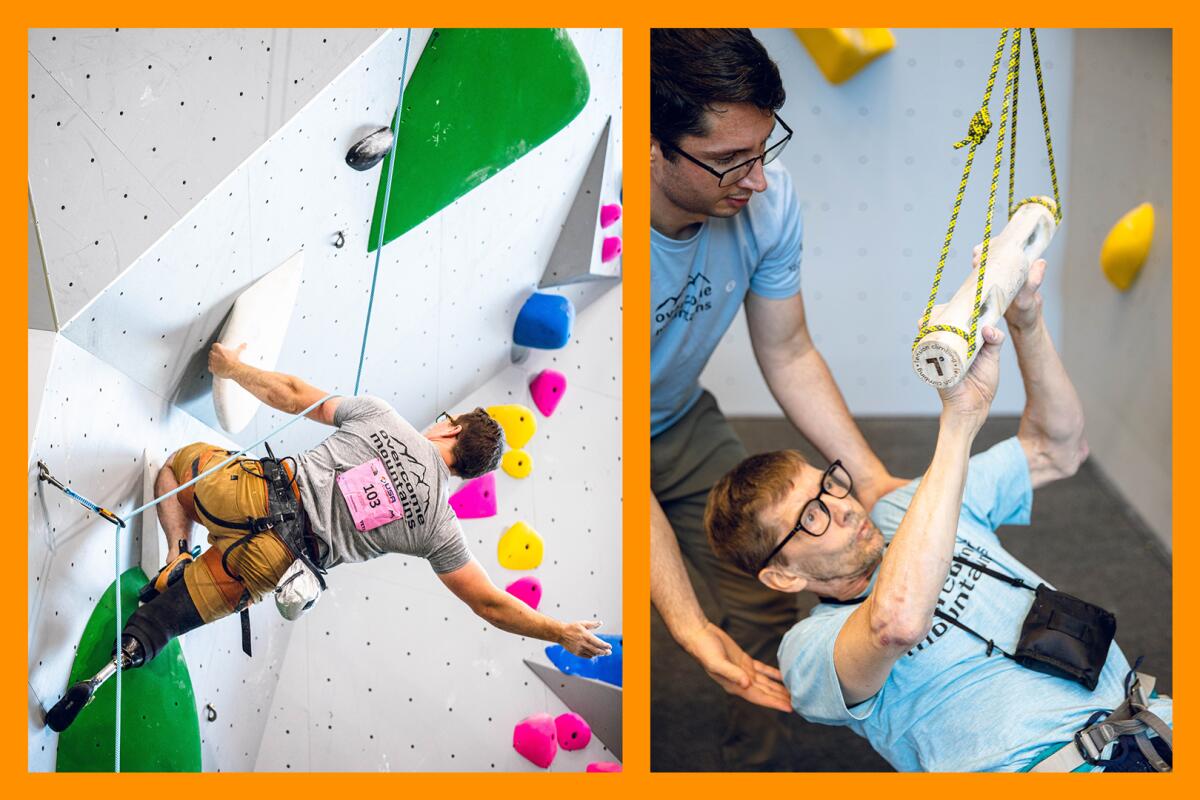
If you’re a nonadaptive climber, Obra wants you to come say hi. “We’d love to increase the amount of folks who come who are belay-certified so we can help our paraclimbers become belay-certified themselves. We just want folks to have more climbing friends, so adaptive climbers can get more time on the wall. Then, they can climb outside of ParaCliffHangers meetups and be a regular integrated part of climbing at The Post.”
“It feels really special to help someone do something they never thought was possible for them,” says Seelenfreund. “There are so many ripple effects — adaptive climbers are bringing their friends, and it’s growing exponentially. It’s cool to see the broader community embrace adaptive climbing.”
Follow ParaCliffHangers on Instagram to stay updated with its meetups, and subscribe to its mailing list here (scroll to the bottom of the page). You can also donate to the nonprofit. If you want to attend or assist with PCH’s regular meetup on every third Tuesday of the month at The Post in Pasadena (discounted to $10 during these sessions for paraclimbers and their family, friends and belay partners), sign up here. Obra welcomes you to message her on Instagram to share your needs and let her know you’re coming.
3 things to do

1. Protect the plant babies of Mulholland. Head to the Mulholland Corridor in the 90046 ZIP Code with Studio City-based Citizens for Los Angeles Wildlife (CLAW) for its Habitat Restoration Project 1 on July 15 from 9 to 11 a.m. You’ll help monitor and support new native plants, including wildflowers, shrubs and trees, by weeding, watering and working to humanely protect nascent plants from deer and gophers. Some volunteers will tag juvenile plants to save them from fire-preventive weed removal. The event, held every third Saturday of the month, is free; RSVP via the volunteer form, as space is limited.

2. Play in the forest. The playful atmosphere curated in this small nature group by Hanaa Zerroug urges amateur naturalists to find their childlike connection to the earth by nurturing curiosity and the scientific method when observing native plants, like the threatened alpine or Humboldt’s lily, an eye-catching vibrant orange spotted beauty, and the native, parasitic snowplant, which pops up when the snow melts and parasitizes the beneficial fungi found near tree roots. The free small group — there’s a 12-person limit — will visit the Angeles Forest (location provided once you sign up) on July 25 from 7:30 to 10:30 a.m.
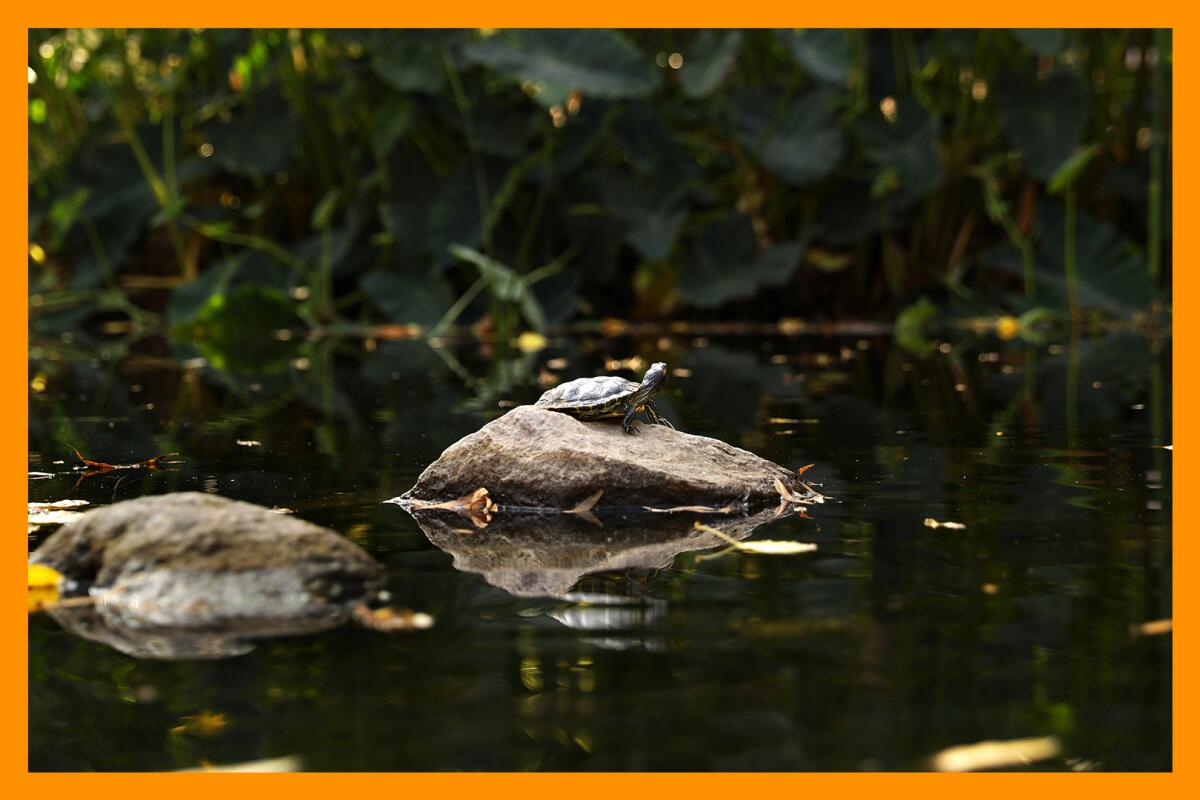
3. Revel in our wildlife corridor. On display until Oct. 1, Descanso Gardens’ ”Living in a Wildlife Corridor” exhibit is well worth a visit, with its emphasis on Descanso Gardens’ place in the Hahamongna to Tujunga Wildlife Corridor — a series of passageways that the Arroyos & Foothills Conservancy is working to establish for wildlife to travel between the San Gabriel Mountains and the isolated open space of the San Rafael Hills, Verdugo Mountains and Griffith Park. With photographs, artwork and stories from the Tongva, the exhibit will teach visitors how to steward this valuable land. P-22 lovers will appreciate the mural dedicated to the beloved mountain lion, while kids will revel in the hanging monarch room. The price of admission includes access to the exhibit: It’s $15 for adults, $11 for seniors (65 and older), $11 for students with ID, $5 for children 5 to 12 years old and free for children 4 years and younger.
The must-read
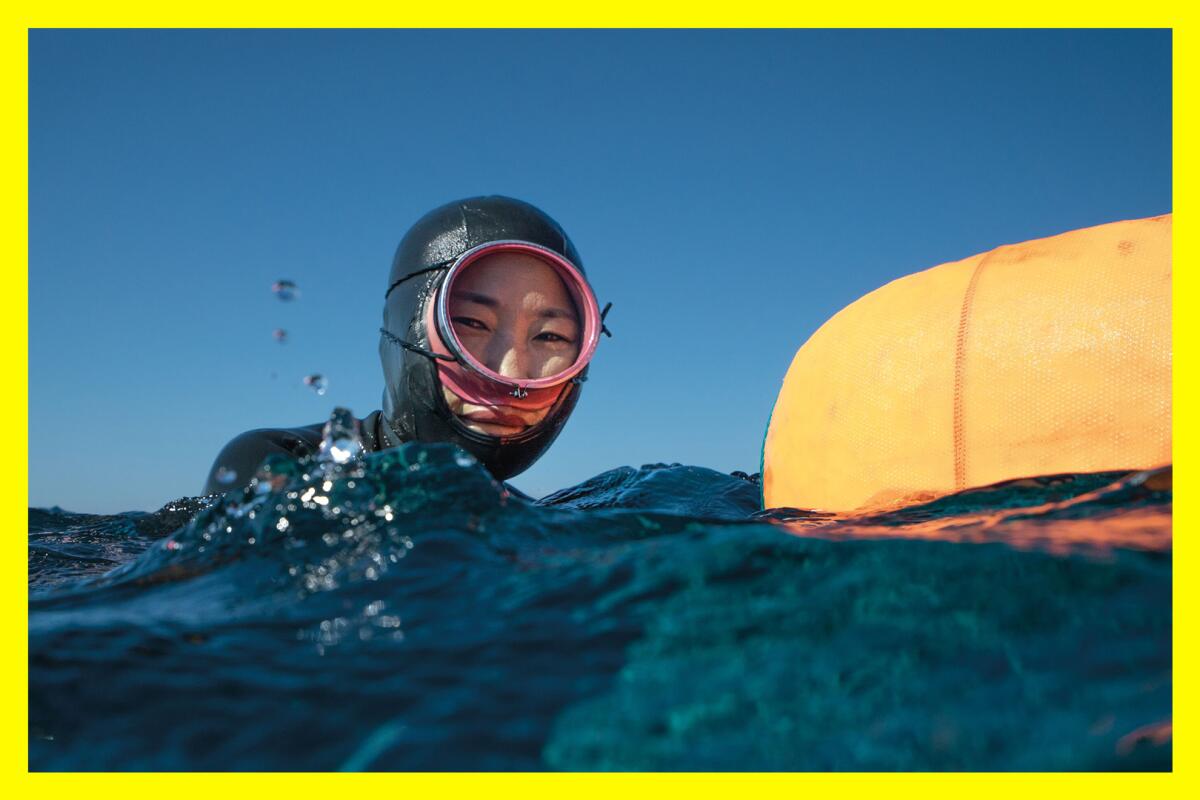
“Daughter of the Sea,” an 18-minute documentary sponsored by Patagonia Films, reframes success in our modern age as joy and connection with nature. After Jaeyoun Kim, a native of Mara Island in South Korea, moves to Seoul to pursue corporate work, she struggles with depression and suicidal ideation. She decides to return home to tiny Mara Island, where generations of women in her family have worked as haenyeo, free-diving “mermaids” who harvest seafood from the ocean floor for a living. Weaving Kim’s narrative with pensive, deeply immersive dive cinematography, directors Nicole Gormley and Nancy Kwon tell a story of homecoming, and how nature can bring us back to self when we’ve lost our center.
If you or someone you love is facing mental health challenges, help is available. Here is a list of resources.
Happy adventuring,

P.S.
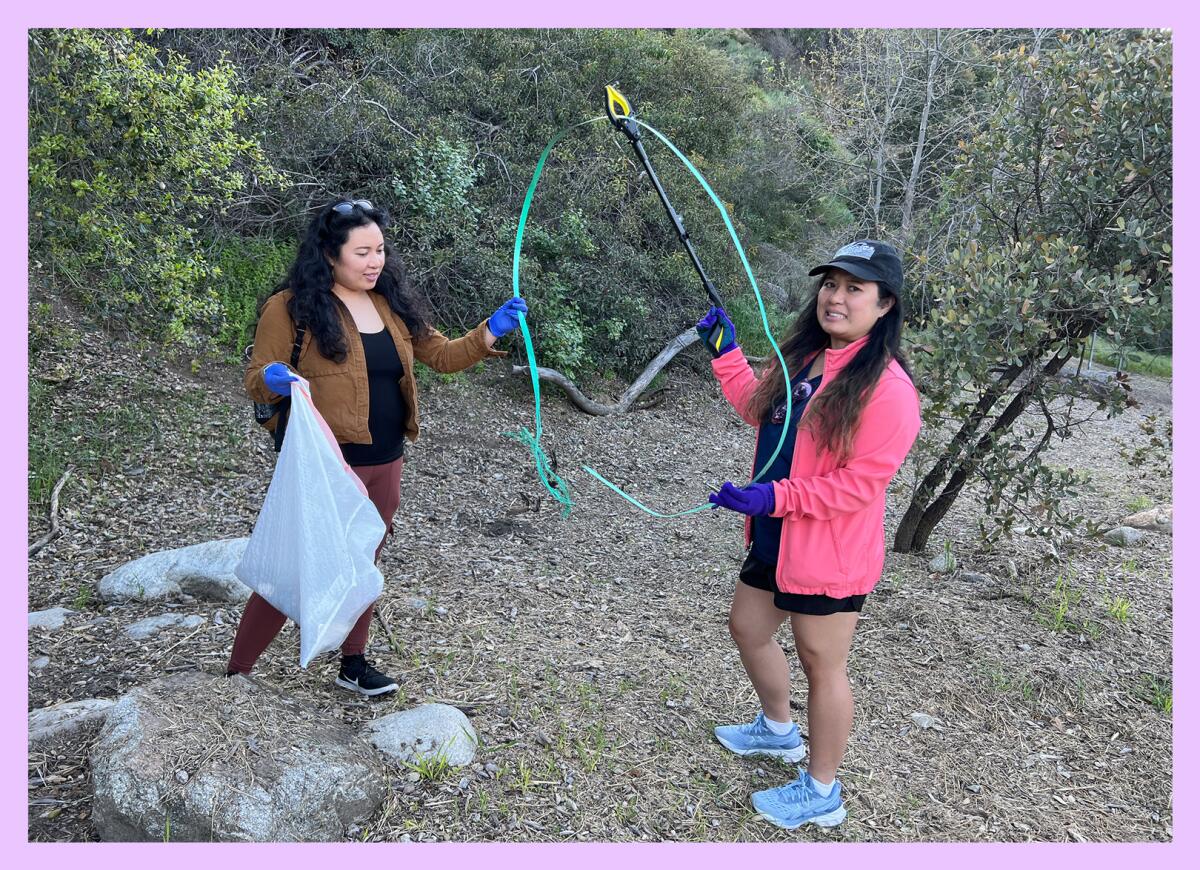
Birthday, wedding, baby shower and gender-reveal party season has hit the outdoors, and it’s beautiful to see folks celebrating. But I’m also seeing more exploded balloon fragments, ribbons, glitter and confetti on the trail at spots like the Lower Arroyo Park, where I met trash-fighting sisters Kelly and Christy Villasor, aka Pick Up While You Hike Up. If you’re hiking, think about bringing a trash bag and gloves (reusable trash bags abound on Etsy) so you can grab some plastics and nonbiodegradables and throw them in the trash or recycling before you head home.
And if you can encourage your friends and relatives to ditch the glitter, including the biodegradable glitter, my favorite green queen Pattie Gonia and I thank you.
For more insider tips on Southern California’s beaches, trails and parks, check out past editions of The Wild. And to view this newsletter in your browser, click here.
Sign up for The Wild
We’ll help you find the best places to hike, bike and run, as well as the perfect silent spots for meditation and yoga.
You may occasionally receive promotional content from the Los Angeles Times.




